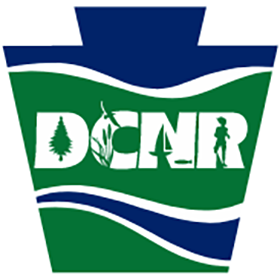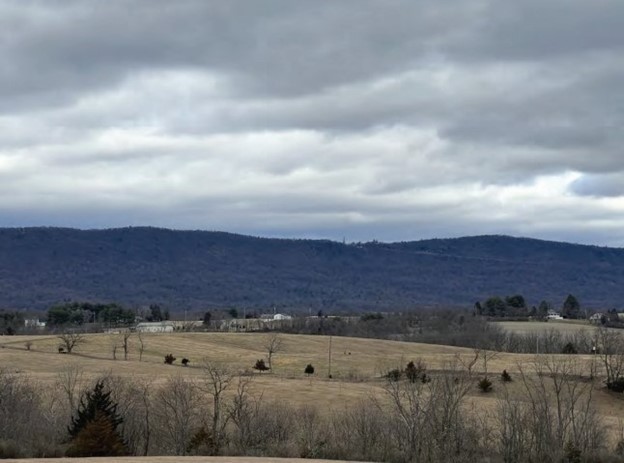
WeConservePA is providing grants to land trusts to support the completion of land assessments and resource management plans for largely forested lands already under conservation easement.
Subject lands must be in the Pennsylvania portion of the Chesapeake Bay Watershed.
Applications will be accepted and reviewed on a rolling basis through May 31, 2024, or until all project funds are committed, whichever comes first. WeConservePA will award up to $150,000 in total grants for this planning work.
WeConservePA will post regular updates at weconservepa.org/fmp as to how much in grant funds remains available to applicants.
Applicants may request grants in any amount.
This grant program is intended to explore the ways that land trusts, landowners, and forest professionals might work constructively together to better understand conserved lands and ultimately produce better conservation results on the land, including better forest health, habitat improvement, water resource protection, and sustainable timber production.
WeConservePA staff will be available online from 10 to 11 am on Wednesday, February 7, to address questions of would-be applicants. Register to participate.
Submit applications (as well as questions not answered at the February 7 meeting) to Carol Grayshaw at [email protected] with the subject “FMP grant app.”
Link to PDF of grant information.
Schedule and Time Window for Performance
Feb. 12, 2024: WeConservePA begins accepting grant applications
Mar. 11, 2024: WeConservePA begins making grant awards on a rolling basis
Dec. 31, 2024: Deadline for project completion.
It is outside of WeConservePA’s control as to whether time extensions are possible, so applicants should view 12/31 as a hard deadline for performance of work and expenses eligible for reimbursement.
Minimal Match Requirements
No match needs to be documented.
The only expenses that must be borne by awardees without WeConservePA reimbursement are those resulting from the awardee’s time spent preparing the grant application, submitting final expense documentation, providing brief one-year and two-year updates on any actions taken as a result of the planning effort, and other administrative and indirect personnel expenses incurred.
Background; Grant Program Objective
Conservation easements have an excellent track record in Pennsylvania as tools to block landowners from taking actions that would harm the conservation values of the land. Between the use of the Model Grant of Conservation Easement and Declaration of Covenants, land trust monitoring and enforcement, and the courts’ excellent record of upholding conservation easements in Pennsylvania, there is assurance that improvements, activities, and uses contrary to the easement’s conservation objectives will not happen on eased lands in Pennsylvania.
However, there is more to conservation than simply blocking bad actions on the land. Due to invasive species, deer over browsing, climate change, and other factors, the land often will need proactive management steps to be taken to actually improve forest health, wildlife habitat, and water quality. Moreover, it’s likely that without some proactive management, the land conserved could actually experience a loss in conservation values over time. This presents a challenge as land trusts typically lack the funding, information, tools, and other resources to meaningfully advance proactive management on lands they have under easement; landowners, for their part, are unlikely to act proactively in the absence of guidance and incentives. The challenge is heightened by the lack of study of changes in conservation values on already eased properties and paucity of management plans created with the primary objective of promoting healthy forest, habitat, and waters on those properties.
By funding the assessment of conservation values on eased properties and identifying affirmative, actionable measures that can be taken on each individual property to improve upon these values, the grant program aims to arm land trusts and landowners with the information and plans they need to improve forest resiliency, wildlife, and water quality outcomes over time. WeConservePA also hopes to gain insights into what is happening following grants of easement to conservation values on the eased lands, which may suggest new strategies for conservation easement management in future years.
Expenses Eligible for Grant Reimbursement
The following expenses related to the completion of the land assessments and resource management plans are eligible for grant reimbursement:
- Professional fees
- Personnel time spent directly on implementation of the project (except as noted elsewhere), including preparation of a final report to help WeConservePA design future grant programs and future grantees optimize their planning efforts.
- Staff costs are limited to actual salary, benefit, and payroll tax expense.
- Documentation of staff costs must include name and position of staff person, hourly rate, dates and hours worked on the project, total hours and resulting total reimbursable expense.
- Personnel billing rates must reflect the actual direct cost to the organization for the person and may include all forms of compensation (for example, health and retirement benefits) and payroll taxes. No overhead or administration may be added.
- Travel to and from the project site (mileage billing must not exceed federal reimbursement rates)
- Printing
All expenses must be documented.
Ineligible expenses include:
- Survey of property boundaries
- Other expenses not immediately connected to the production of the land assessment or resource management plan
Qualifications of Grant Recipients
To receive a grant, recipients must:
- Be tax exempt pursuant to section 501(c)(3) of the Internal Revenue Code
- Be registered with the PA Bureau of Charitable Organizations
- Have adopted Land Trust Standards and Practices
Eligible Lands
The lands to be the subject of the land assessment or resource management plan must:
- Be largely forested land or intended to be restored to forest cover
- Be subject to a conservation easement in perpetuity that protects significant conservation values and is held by the land trust that is to receive the grant
- Be in the Pennsylvania portion of the Chesapeake Bay Watershed
- To the best knowledge of the easement holder, be in compliance with the terms of the grant of conservation easement or, if not, be either in the process of coming into compliance in the judgment of the easement holder or subject to a waiver provided by the easement holder regarding the violation
Qualified Plans
What qualifies a land assessment or resource management plan for funding? WeConservePA is looking for proposals that will provide landowners and awardees with clear, authoritative guidance as to how to better advance any or all of the conservation objectives of the conservation easement for the land. As this program is an exploration into what constructive steps may be taken by easement holders and landowners in improving conditions on eased properties, WeConservePA looks to the applicants to develop proposals for plans that best meet the program’s objectives.
Applicants are encouraged to consider conducting the planning work to comply with NRCS (Natural Resources Conservation Service) requirements for a Forest Management Plan so as to make the subject property eligible for federal funding for the implementation of conservation treatments on the land.
The Grant Application
Required Contents
- A concisely written proposal (brevity is welcome as long as the project is well-described) that includes:
- A description of the work to be completed.
- A description of the qualifications of those who will conduct the work.
- Either a fixed price or fixed range of potential cost for the project and a brief description of how this amount was arrived at.
- Letter from landowners addressed to applicant AND WeConservePA: (a) expressing support for the project; (b) stating that they give the applicant and any contractors hired to develop the land assessment or resource management plan permission to enter their property to conduct the research necessary to produce the assessment or plan; and (c) stating that they approve sharing the resulting assessment or plan with the applicant and WeConservePA.
- Communication from service provider (if any) expressing commitment to complete the project and submit billing (to landowner or grantee depending on how the parties prefer to structure their relationships) no later than December 15, 2024.
- Copy of first page of the grant of conservation easement to which the land is subject.
Submitting a Winning Application
WeConservePA is more likely to award grants for projects with the following characteristics:
- The people who are to conduct the work have experience that indicates they will produce a high-quality product.
- The landowners are unambiguously and strongly supportive.
- Although not a requirement, preference will be given to lands subject to easements based on WeConservePA’s Model Grant of Conservation Easement and Declaration of Covenants.
- The application evidences strong interest by the parties in ultimately moving from planning to implementation of actionable items to improve conservation outcomes.
The Grant Award
The Award
WeConservePA will seek to swiftly make decisions regarding application submittals—within two weeks of submission starting on March 11. The award will be a commitment from WeConservePA to reimburse the grantee for their project expenses as agreed to in the grant award letter and contingent on the grantee completing their project in accordance with program requirements.
Reimbursement Grant Process
WeConservePA will make grant payments on a reimbursement basis upon receipt of final project work products and documentation from the grantee including:
- Documentation of all expenses to be reimbursed
- PDF of the land assessment or resource management plan
- A report by the grantee sharing:
- Lessons learned that might help WeConservePA structure future grant programs and future grantees optimize their own planning efforts
- Insights gained into what is happening following grants of easement to conservation values on eased lands.
- Insights gained as to what proactive steps are needed on eased lands to make improvements to forest resiliency, wildlife, and water quality outcomes over time.
Post-Project Obligation
To receive a grant, awardees must agree to provide WeConservePA with simple, brief reports one and two years after project completion that the describe the actions taken, if any, to implement elements of the resource management plan developed under the grant.



